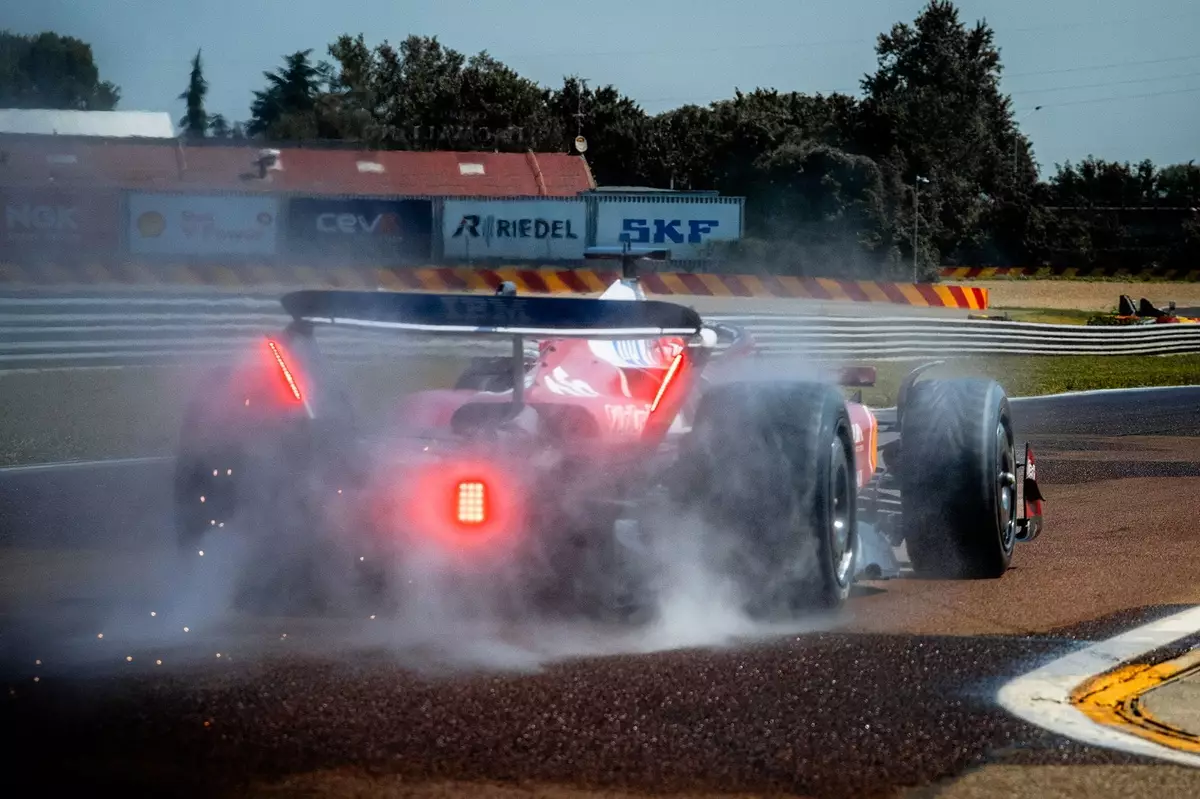Formula 1 is often synonymous with speed, precision, and technology, but when the heavens open, the excitement can rapidly turn to trepidation. While the engineering marvel that is the Pirelli ‘wet’ tyre can expertly displace an astounding 85 litres of water per second, the real challenge lies in effectively utilizing it during actual racing conditions. The disparity between the performance of wet and intermediate tyres often leads to predictable scenarios: either a red flag situation or drivers opting to trundle around on less effective intermediates, conserving track position rather than risking a pit stop.
One glaring illustration of this phenomenon occurred at the 2021 Belgian Grand Prix, where the inclement weather conditions kept the cars in the pit lane for a considerable period. Fast forward to last year’s Brazilian GP, and the same pattern repeated itself. Instead of taking the plunge to switch to full wet tyres, drivers preferred to preserve their position, leading to a lack of competitive racing action. This behaviour raises a crucial question: Why hasn’t the wet tyre evolved to deliver a performance that encourages more aggressive driving in slippery conditions?
Pirelli’s Quest for Improvement
Pirelli, the exclusive tire supplier for Formula 1, is acutely aware of the limitations of its wet tyre and is revolutionizing its design for the next generation of cars arriving in 2026. Motorsport manager Mario Isola’s statements highlight an ongoing commitment to enhancing the tyre’s usability. The goal is to narrow the performance gap between wet and intermediate tyres, moving beyond the flawed paradigm that currently sees serious racing suspended in anything but ideal conditions.
The reluctance to use the wet tyre stems from its current propensity to overheat and degrade rapidly, especially when the weather doesn’t turn particularly aggressive. In fact, during the entire current season, the wet tyre has seen very minimal action, largely relegated to a few token laps. A shift in engineering perspective is necessary—not only to refine the physical characteristics of the tyre but also to redefine its efficacy in varied weather scenarios.
The Science of Crossover Points
One of the more technical aspects influencing how drivers perceive wet tyres is the concept of the crossover point—the threshold at which conditions necessitate a change from slicks to intermediates or wets. Historically, this metric is nuanced, typically identified when lap times fall to 112% of the dry-weather pace. The previous iteration of Pirelli wet tyres only became serviceable at an alarming 120%. This indicates a fundamental flaw in the design, as drivers were often left without a viable option until visibility or track conditions became dangerously poor.
The introduction of a new wet tyre specification for the current season was aimed at lessening thermal sensitivity and enhancing tread stability under load, yet an inability to conduct comprehensive testing left room for uncertainty. The crossover for the new tyre remained stubbornly set at 118%, falling just short of the target, and highlighting Pirelli’s ongoing struggles. The quest to redefine these parameters for the 2026 season presents a fascinating challenge—one that combines intricate engineering with the unpredictable nature of weather conditions.
Testing for Tomorrow’s Tyres
In preparation for these upcoming changes, Pirelli conducted validation tests using mule cars at Ferrari’s Fiorano circuit, with drivers Charles Leclerc and Zhou Guanyu navigating varied load conditions. However, the reality of utilizing mule cars means that consistency can be elusive, particularly given the unpredictable summer weather in Emilia-Romagna.
These tests are crucial for establishing the right balance between performance and safety when the skies turn grey. The continuous pursuit of improved safety and enhanced race conditions ties back to the fundamental ethos of Formula 1: to push the boundaries of technology and performance.
The transformation of the Pirelli wet tyre embodies the tension between technical excellence and practical racing dynamics. As drivers, teams, and fans alike eagerly await the future of Formula 1, the quest for the perfect wet tyre could prove to be one of the sport’s most riveting chapters yet.

